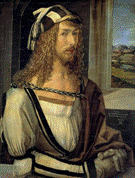Art, Art History and Design, School of

School of Art, Art History, and Design: Faculty Publications and Creative Activity
Document Type
Article
Date of this Version
2014
Citation
Published in Animals and Early Modern Identity, ed. Pia F. Cuneo (Farnham, England, and Burlington, VT: Ashgate/Gower, 2014), pp. 19-44.
Abstract
When Jacob Seisenegger and Titian painted individual portraits of Emperor Charles V around 1532, a dog replaced such traditional accouterments of imperial power as crown, scepter, and orb.3 Charles placed one hand on the dog’s collar, a gesture indicating his companion’s noble qualities including faithfulness.4 At the same time, another more down-to-earth meaning for the dog had become prominent in the decades before the imperial portraits: the interest in and ability to eat anything in sight. This pig-like ability resulted in dogs, alongside pigs, becoming emblems of indiscriminate and gluttonous eating and drinking during the early sixteenth century when humanists, along with town and imperial authorities and reformers across confessional lines, addressed their heightened concern for social issues. These reform issues and other approaches will be discussed in this chapter.
Included in
Ancient, Medieval, Renaissance and Baroque Art and Architecture Commons, European Languages and Societies Commons, Fine Arts Commons, German Language and Literature Commons, Illustration Commons, Theory and Criticism Commons


Comments
Copyright 2014 Ashgate/Gower. Used by permission.